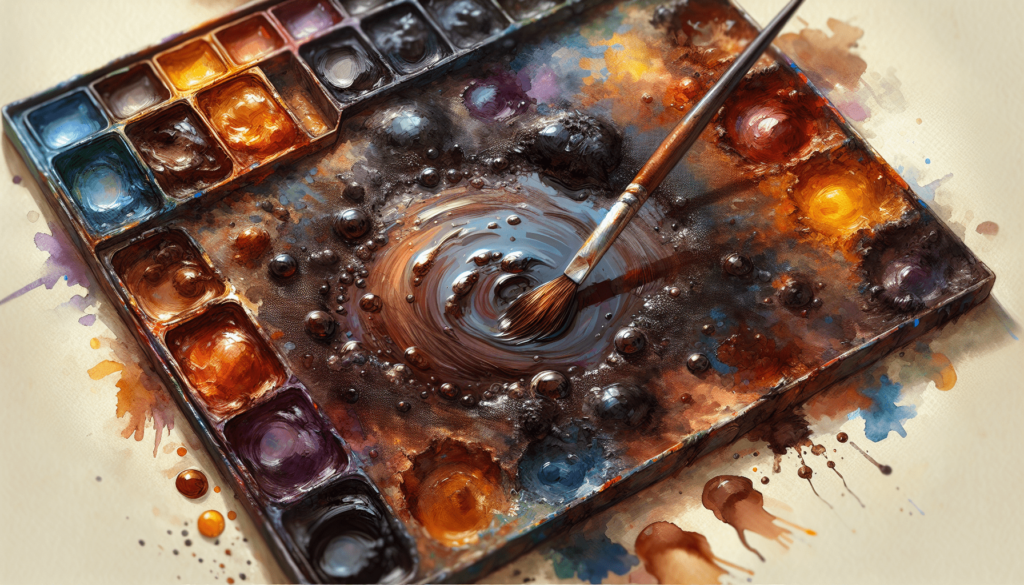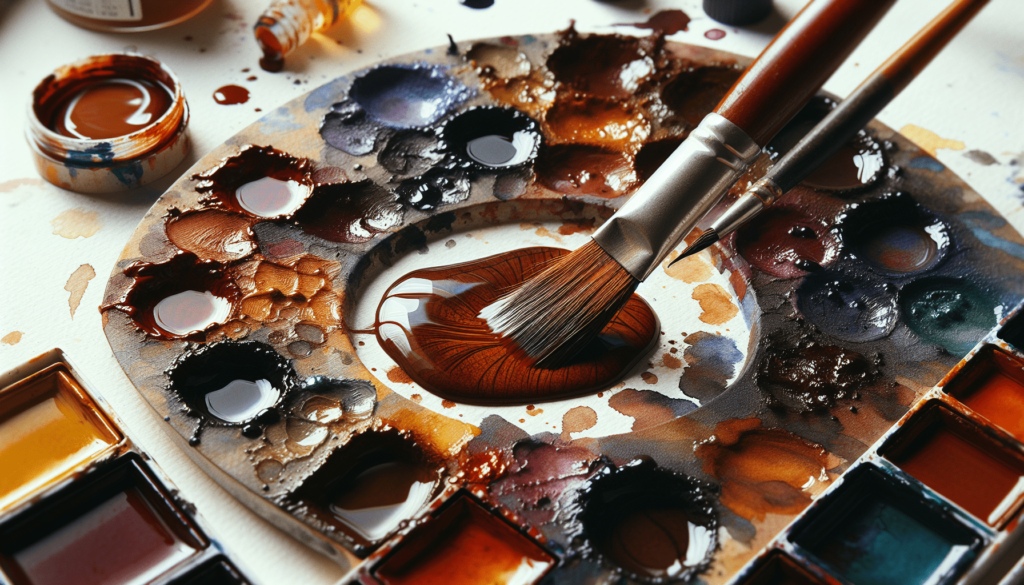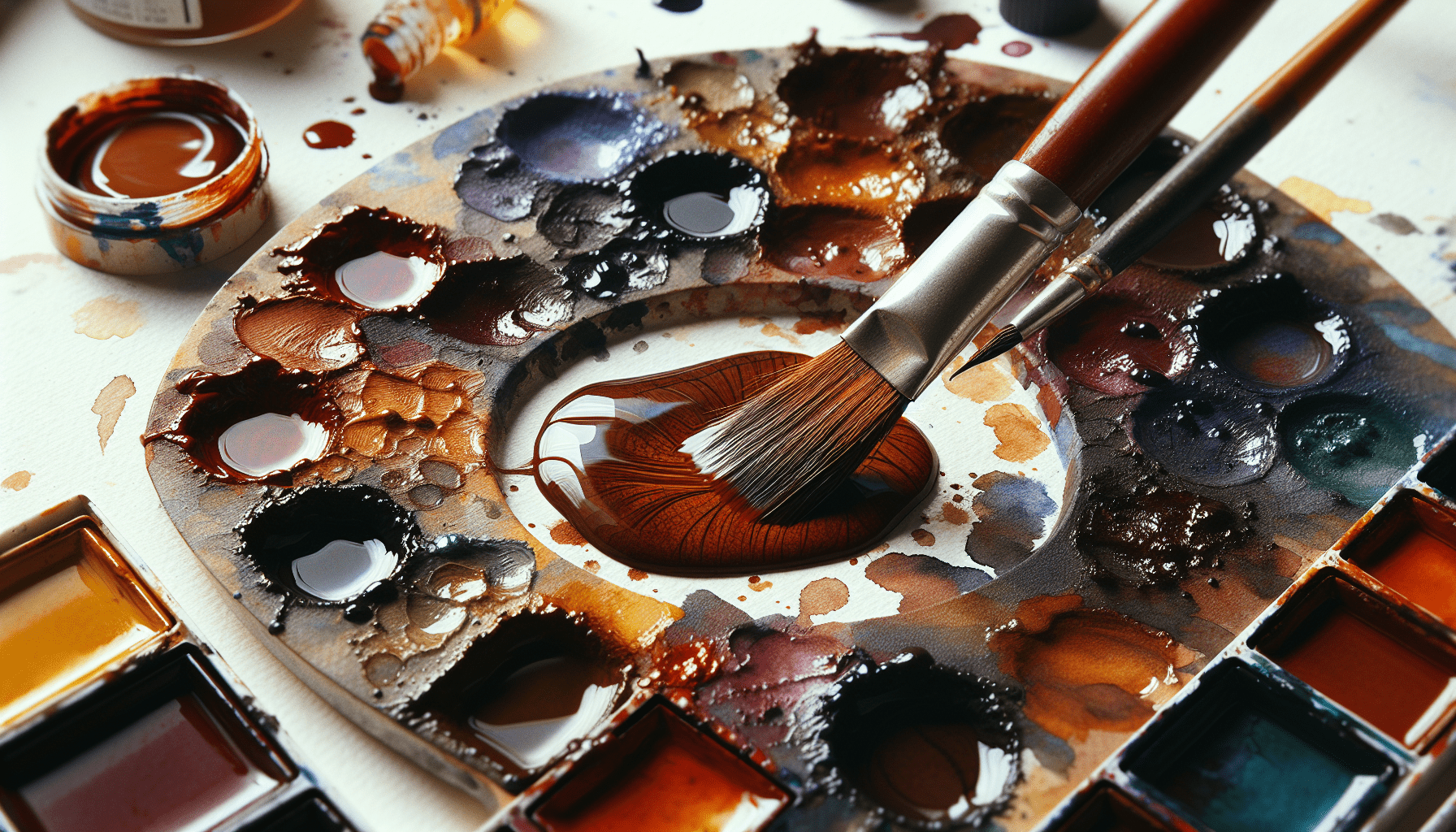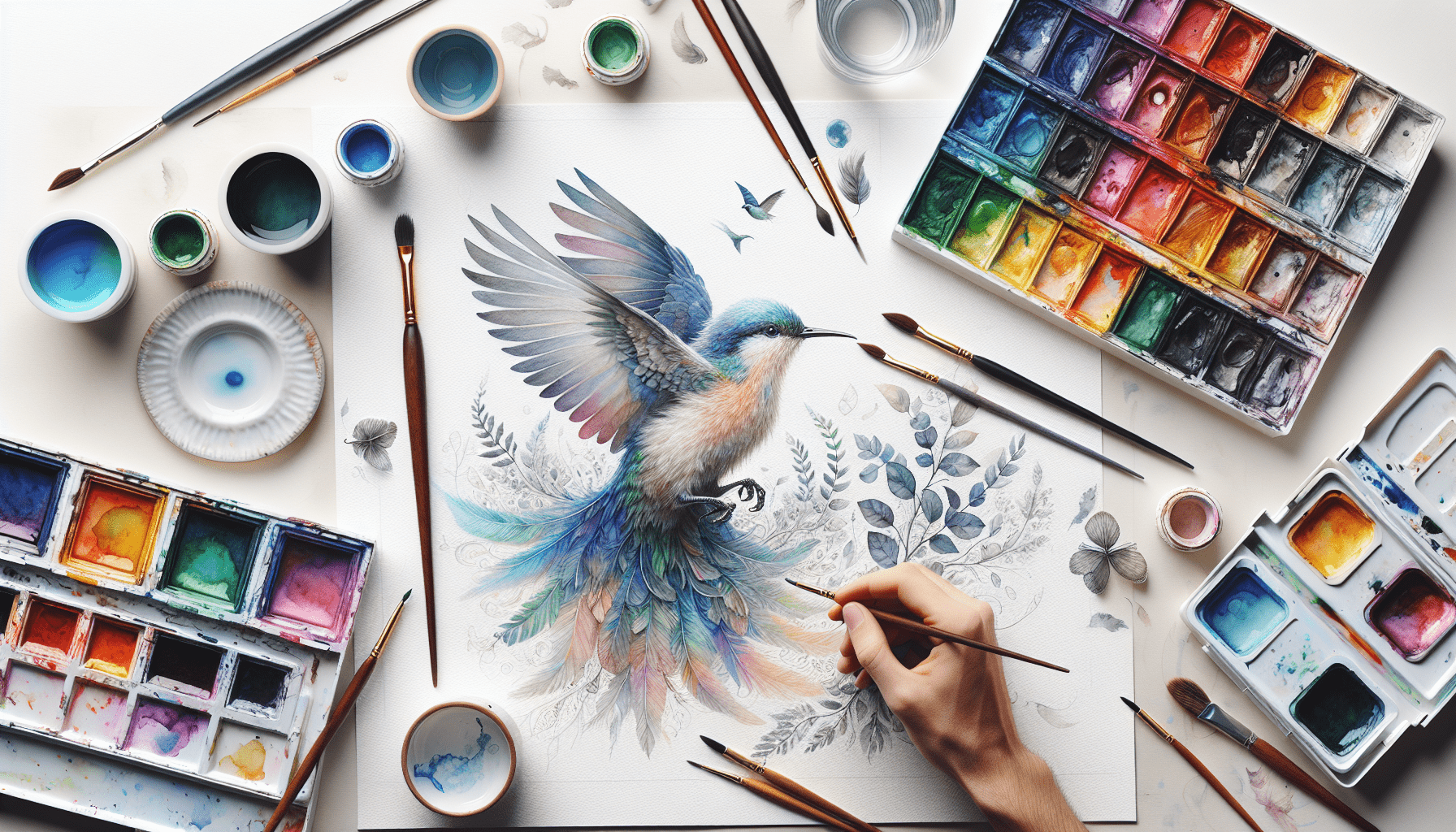In the article “How To Make Brown Watercolor Paint,” you will gain a comprehensive understanding of the techniques and color mixing principles essential to creating the perfect shade of brown. You will explore the art of blending primary colors to achieve various brown hues, and delve into tips for adjusting the paint’s intensity to match your artistic vision. This guide aims to provide you with both the foundational knowledge and nuanced strategies necessary to elevate your watercolor painting skills.
How To Make Brown Watercolor Paint
Have you ever wondered how to achieve the perfect shade of brown in your watercolor paintings? Whether you’re a seasoned artist or just starting, understanding how to mix colors to get the desired hue is essential. This article will guide you through the steps of making brown watercolor paint, exploring various techniques, tips, and tricks to help you master this versatile color.
Understanding Brown in Watercolor
Before diving into the mechanics of creating brown watercolor paint, it’s important to understand what brown actually is. Brown is a composite color that can be created by combining various primary and secondary colors.
The Significance of Brown
Brown is a natural and neutral color often associated with the earth, wood, and stone. It embodies warmth and stability, making it a crucial color in landscape and portrait paintings. Integrating brown skillfully can add depth and richness to your artwork, making it more realistic and grounded.
Color Theory Basics
In watercolor painting, color theory is fundamental to mixing colors effectively. Understanding the color wheel, primary colors (red, blue, yellow), and secondary colors (green, purple, orange) is indispensable. Brown is typically a tertiary color that results from mixing primary and secondary colors.
Mixing Brown Watercolor Paint: Fundamentals
To mix brown watercolor paint successfully, you need a clear grasp of how colors interact. Let’s break down the fundamentals of color mixing to help you get started on the right foot.
Primary Colors
Primary colors form the basis of all other colors. They cannot be created by mixing other colors together. The primary colors are:
- Red
- Blue
- Yellow
Secondary Colors
Secondary colors are created by mixing two primary colors:
- Green (Blue + Yellow)
- Orange (Red + Yellow)
- Purple (Red + Blue)
Tertiary Colors
Tertiary colors result from mixing a primary color with a secondary color. Brown falls into this category and can be achieved by mixing various combinations of primary and secondary colors.

Techniques for Making Brown Watercolor Paint
There are several methods to achieve brown watercolor paint, each offering different shades and tones. Here, we’ll discuss three primary methods to make brown watercolor paint:
Method 1: Mixing Complementary Colors
Combining complementary colors is one of the most straightforward ways to make brown. Complementary colors are those that are opposite each other on the color wheel:
- Red and Green
- Blue and Orange
- Yellow and Purple
Mix any pair of these colors in equal proportions to get a basic shade of brown.
| Complementary Pairs | Color Outcome |
|---|---|
| Red + Green | Brown |
| Blue + Orange | Brown |
| Yellow + Purple | Brown |
Steps
- Prepare Your Palette: Squeeze a small amount of each complementary color onto your palette.
- Mix Equal Parts: Use your brush to pick up equal parts of each color and mix them together.
- Adjust Tone: Add water to adjust the transparency or a small amount of either color to tweak the shade.
Method 2: Mixing Primary Colors
Another effective way to create brown is by mixing all three primary colors together.
Steps
- Prepare the Colors: Squeeze out red, blue, and yellow watercolor paints onto your palette.
- Mix in Equal Proportions: Take equal parts of each color with your brush and mix them together.
- Fine-Tune the Shade: Add more of one color if you want to alter the hue slightly. For instance, adding more blue will give a cooler brown, whereas more red will yield a warmer brown.
Method 3: Adjusting with Secondary Colors
In this method, you can start with a secondary color and then add its complementary primary color to achieve brown.
Steps
- Start with Secondary Color: For example, if you start with green (secondary color), add red (primary color).
- Mix Thoroughly: Use your brush to blend the colors.
- Adjust the Hue: Modify the ratio to get the precise shade of brown you need.
Customizing Your Brown Shades
Creating the perfect shade of brown often involves trial and error. Here are some tips on how to customize your brown watercolor paint to suit your specific needs.
Warm Brown vs. Cool Brown
- Warm Brown: To achieve a warm brown, add more red or orange to your mixture.
- Cool Brown: To make a cooler brown, incorporate more blue or green.
Light vs. Dark Brown
- Light Brown: Add water to your brown mixture to lighten it.
- Dark Brown: Increase the ratio of the darker color (such as blue or red) to darken the shade. Adding a touch of black can also deepen the color.
Transparency and Opacity
- Transparent Brown: More water will make your brown watercolor paint more transparent.
- Opaque Brown: Increase the pigment concentration to make the brown more opaque.

Practical Applications of Brown in Watercolor Painting
Brown is a versatile color that can bring richness and depth to your watercolor paintings. Here are a few scenarios where brown can be particularly useful:
In Landscape Painting
Brown is essential for painting natural elements like trees, soil, rocks, and wooden structures. Using different shades can add realism and texture to your landscapes.
In Portraits
Brown is crucial for skin tones, hair, and eyes in portrait painting. By mastering various shades of brown, you can portray depth, shadows, and highlights in a realistic manner.
In Still Life
Brown can be used to depict wooden objects, pottery, and organic materials. Utilizing different browns can create a sense of weight and form in your still life compositions.
In Abstract Art
Even in abstract art, brown can help create balance and harmony, providing a grounding effect.
Troubleshooting Common Issues
Despite careful mixing, you might encounter difficulties in achieving the desired brown shade. Here are some common issues and solutions:
Problem: Muddy Colors
If your brown looks muddy, you might have overmixed your colors. To avoid this, mix in small quantities and adjust as needed.
Problem: Too Dull
If the brown appears too dull, try adding a small amount of a brighter color like red or yellow to liven it up.
Problem: Too Dominant Hue
If your brown has too much of one color (e.g., red or blue), balance it out by adding small amounts of the other colors until you reach the desired shade.
Advanced Techniques for Creating Brown
Once you’ve grasped the basic principles, you can experiment with more advanced techniques to elevate your watercolor painting skills.
Using Earth Tones
Earth tones are naturally occurring browns found in pigments like burnt sienna, raw umber, and ochre. These can serve as a fantastic base for mixing custom brown shades.
Mixing with Neutral Colors
Neutral colors like gray and black can also be mixed with your browns to achieve unique tones. This can be particularly useful for painting shadows and textures.
Layering Colors
Instead of mixing on the palette, you can layer different colors directly on the paper. For instance, a wash of yellow followed by a wash of purple can create a unique, layered brown effect.
Experimenting with Textures
Using techniques like dry brushing or adding salt can create interesting textures and patterns in your brown watercolor paint, adding more dimension to your artwork.
Essential Tools and Materials
Achieving the perfect brown watercolor paint requires the right tools and materials. Here’s a list of essentials that will help you in your painting journey:
Quality Watercolors
Invest in high-quality watercolor paints to ensure vibrant and consistent colors. Tubes offer more pigment concentration, while pans are more portable and convenient.
Palette
A mixing palette is essential for blending colors effectively. Opt for a palette with multiple wells to keep your colors organized.
Brushes
Choose a variety of watercolor brushes for different effects. A round brush is versatile for detailed work, while a flat brush is ideal for broader strokes.
Watercolor Paper
High-quality watercolor paper is crucial for achieving the best results. Look for paper with a good weight (140lb/300gsm or higher) and texture (cold-pressed for versatility).
Water Containers
Keep separate containers for clean and dirty water to prevent contamination of colors.
Mixing Chart
Creating a mixing chart can be incredibly helpful for visualizing how different colors combine to make brown. This can serve as a reference for future painting projects.
| Tools and Materials | Description |
|---|---|
| Quality Watercolors | High-quality paints in tubes or pans |
| Palette | Multiple wells for organized color mixing |
| Brushes | Variety of round and flat brushes |
| Watercolor Paper | High weight (140lb/300gsm) and cold-pressed texture |
| Water Containers | Separate containers for clean and dirty water |
| Mixing Chart | Visual reference for color combinations |
Final Tips for Mastering Brown Watercolor Paint
Mastering the art of mixing brown watercolor paint takes practice and patience. Here are some final tips to help you on this journey:
Swatch Testing
Always test your mixed colors on a scrap piece of watercolor paper before applying them to your artwork. This allows you to see how the colors interact on paper and make any necessary adjustments.
Keep It Simple
Start with basic mixtures and gradually move to more complex combinations. Understanding the fundamentals will make advanced techniques easier to grasp.
Document Your Mixes
Keep a journal or chart of your color mixtures, noting the ratios and results. This will serve as a valuable reference and help you replicate desirable browns in future projects.
Continuous Learning
Stay inspired by learning from other artists, watching tutorials, and experimenting with new techniques. The more you practice, the more your skills will improve.
Conclusion
Creating the perfect brown watercolor paint involves understanding color theory, experimenting with different mixing methods, and fine-tuning your shades to suit your artistic needs. With practice, you can master this versatile color and elevate the quality of your watercolor paintings. Whether you’re depicting natural landscapes, intricate portraits, or abstract compositions, mastering brown will add depth, warmth, and realism to your artwork. So, pick up your brush and start experimenting—the perfect shade of brown awaits you!



